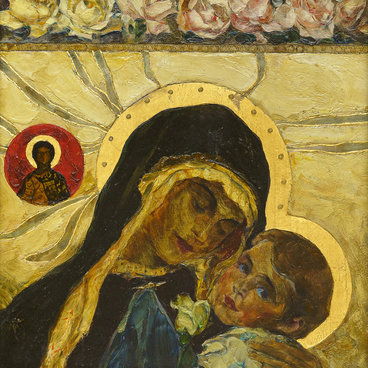The Sytovs were merchants. They owned a brocade factory in Moscow and traded in silver church items. The founder of this dynasty, Ivan Yegorovich Sytov, was a merchant of the 2nd and 3rd guilds. In 1877, his son Yegor Ivanovich Sytov had already been listed in documents as a hereditary honorary citizen.
Apartment buildings and shops owned by the Sytov family were located in central Moscow. The family sought to enhance its financial standing through alliances with prominent merchant families. One Sytov married Vera Rastorguyeva, the daughter of Alexei Dmitrievich Rastorguyev, the owner of Moscow’s largest confectionery company. Vladimir Vasilyevich Sytov married Alexandra Andreyevna Durdina, a member of the St. Petersburg branch of this prominent family. Anna Vasilyevna Sytova married Ivan Ivanovich Durdin, a brewer from Rybinsk. In total, three members of the Sytov family married three representatives of the Durdin family. It is likely that portraits of their Moscow relatives were kept in their Rybinsk house.
The painting on display at the Rybinsk Museum shows a middle-aged man, from the waist up. The features of his elongated face are highly expressive, and wisdom and rigor can be discerned in his gaze. The furrowed brow adds even more gravity to his appearance. His hair is black and he sports a bowl cut, a popular hairstyle among Russian merchants in the 19th century. He has an impressive curly beard, which reaches down to the middle of his chest. During this period, growing a beard was common among peasants and merchants in Russia.
The man holds a light green book with the title “The New Testament” written on the spine. This book hints at the nature of the family business — the sale of religious items. At the same time, the gospel indicates that the Sytovs were pious and charitable. Vladimir Yegorovich Sytov was well acquainted with Fyodor Dostoevsky, whose works focus on the themes of morality and Christianity.

